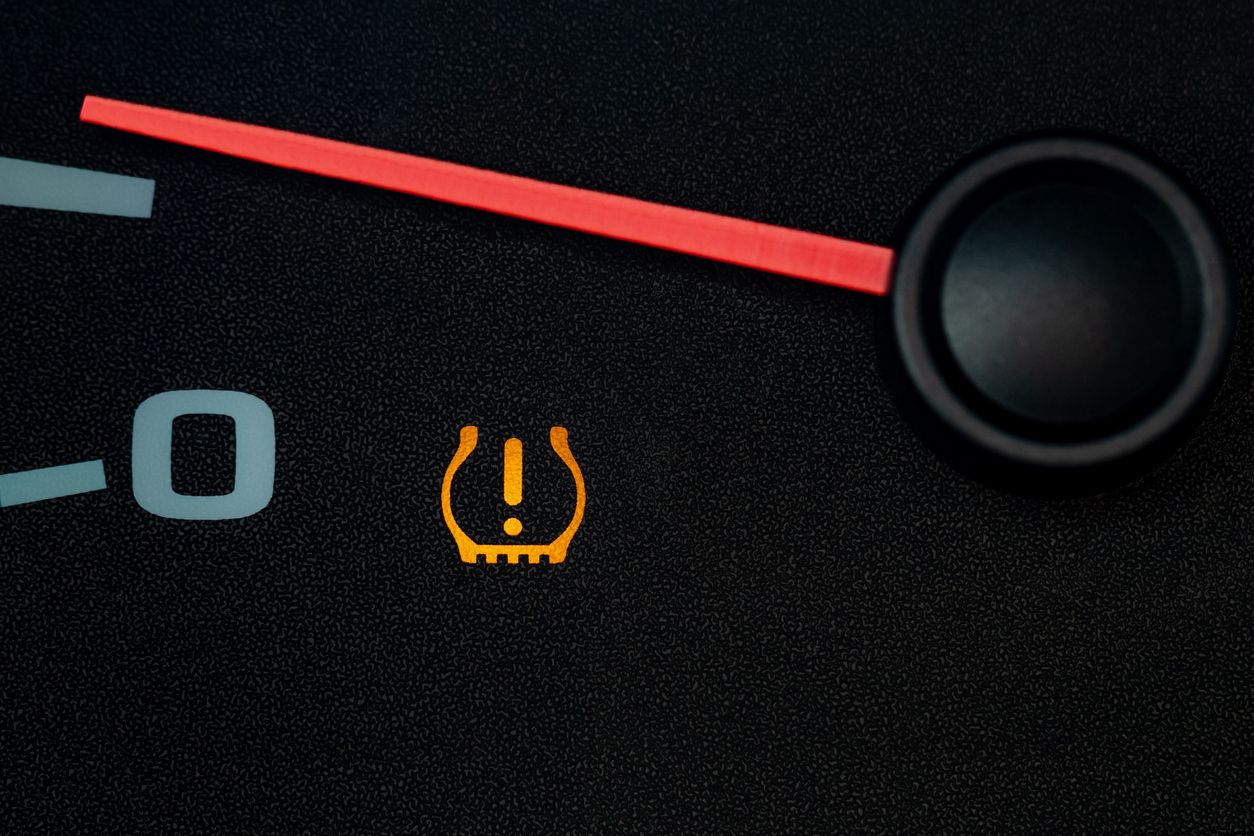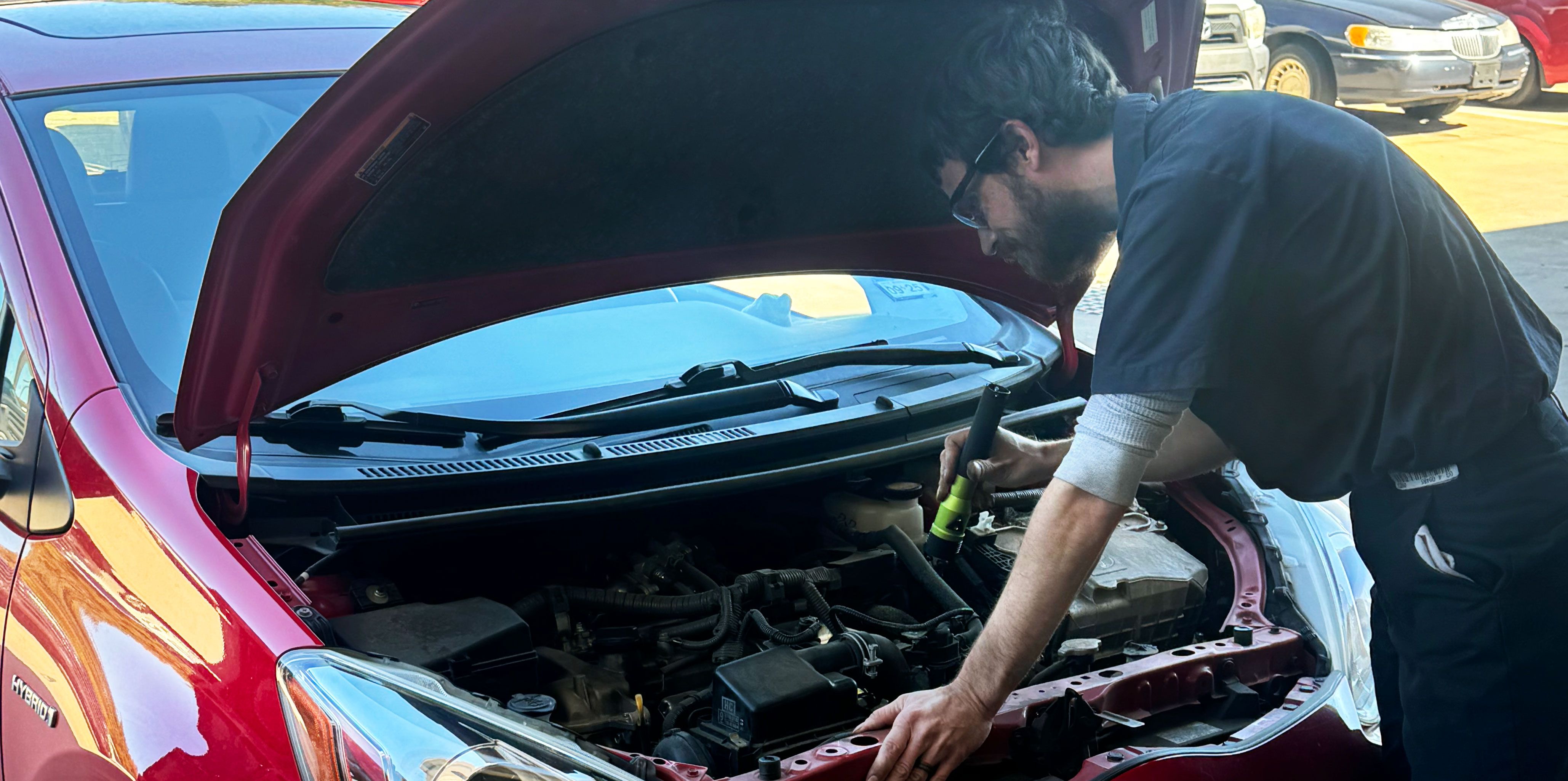Keeping your car road-ready consists of more than just fueling up and changing its oil; there’s one often-overlooked feature that quietly works to save you money and keep you safe: the tire pressure monitoring system (TPMS). Though it might seem like just another light on your dashboard, the TPMS is vital to your car’s health and performance. An adequately maintained TPMS—through repair, replacement and potential resetting—can offer significant advantages for your driving experience and wallet, from improved fuel efficiency to extended tire life.
What is the Purpose of the TPMS System?
But what is the TPMS, and why does your car have it? Your TPMS monitors your vehicle’s tire pressure — a crucial job, considering that proper tire inflation is vital to driving safely and efficiently. Under-inflated tires can:
- Reduce handling capability
- Strain your braking system
- Reduce fuel economy
- Promote premature tire wear
- Lead to overheating of the tires, potentially leading to a blowout
Your vehicle's TPMS helps maintain your car's safety and performance by continuously monitoring your tire pressure and notifying you when it falls below a certain threshold.
How Does a TPMS Sensor Work?
So, how does a tire pressure monitoring system work? Tire pressure monitoring systems typically rely on TPMS sensors — small devices inside each tire of your vehicle that measure tire conditions and send that information to your vehicle's onboard computer. There are two types of TPMS systems, and their tire pressure sensors work in different ways:
- Direct TPMS: This type of system uses sensors that measure the air pressure inside your tires. These sensors provide highly accurate readings but tend to be slightly more expensive than their indirect TPMS counterparts.
- Indirect TPMS: Unlike direct TPMS, indirect TPMS doesn’t measure the air pressure inside your tire. Instead, it relies on wheel speed sensors. When a tire’s air pressure drops, its diameter changes, causing it to spin at a slightly different speed than properly inflated tires. The wheel speed sensors report this difference to your car’s onboard computer, which warns you that your tire pressure may have decreased. While not quite as accurate, this system tends to be more cost-effective.
The Benefits of TPMS Maintenance
While there is no preventative TPMS maintenance to be performed on a vehicle beyond repair, replacement, and potential resetting, neglecting yours can affect certain things, including:
- Fuel Economy: When tire pressure is too low, rolling resistance increases, so your car burns more fuel to move the distance it would with properly inflated tires. Any decrease in tire pressure — no matter how slight — can cause reduced fuel efficiency, which adds up over time.
- Tire Longevity: Tires should roll on their apex, and underinflation may prevent that from happening. As such, underinflated tires tend to wear faster on their edges. Your TPMS system helps remind you to inflate your tires, ensuring you can squeeze every mile possible out of your tires.
- Safety: Low tire pressure can negatively affect your vehicle’s handling, braking, and even lead to a flat tire or blowout. By alerting you when tire pressure is low, your car’s TPMS reduces these risks, keeping you and other drivers safer.
- Vehicle Performance: Proper tire pressure optimizes your vehicle’s performance — from how it grips the road to how smoothly it brakes. A well-maintained TPMS keeps you informed so your car can perform at its peak.
TPMS Warnings: FAQ
What Does the Tire Pressure Warning Light Look Like?
The standard TPMS warning light looks like a horseshoe-shaped outline of a tire with an exclamation mark (!) in the center. This light typically signals that at least one of your vehicle’s tire pressures is below the recommended level.
What to Do If You See It: Use a tire pressure gauge to check the air pressure of each tire and inflate any under-inflated tires to the correct PSI.
What Does it Mean When TPMS Light Flashes?
A flashing TPMS light often indicates a system malfunction, such as an inconsistent reading from a tire pressure sensor or an issue with your sensor battery.
What to Do If You See It: If the TPMS warning light flashes briefly and stays solid, check the pressure of all four tires—and the spare tire if equipped. If it continues to flash after properly inflating your tires, you may need a professional diagnostic to determine if a sensor is failing.
What Does “Check TPMS” Mean?
The “Check TPMS” message typically signifies an issue unrelated to tire pressure, such as a sensor malfunction or a dead sensor battery.
What to Do If You See It: This alert generally requires a professional diagnostic to identify and fix the problem. A technician may need to inspect, reset, or replace specific TPMS components to ensure your system functions properly.
What Does “Service Tire Monitor System” Mean?
The “Service Tire Monitor System” warning is similar to the “Check TPMS” message. It generally means the system isn’t detecting one or more of your TPMS sensors.
What to Do If You See It: You might wonder, “Is it safe to drive with ‘service tire monitor system’ displayed?” Yes and no. If you check the pressure of your tires before doing so, you’re probably safe to drive a short distance. However, you should bring your vehicle to a service center soon for attention from a qualified technician. Like the “Check TPMS” indicator, this issue may mean a sensor, battery, or other TPMS component needs to be repaired or replaced.
Keep your TPMS Functioning at Firestone Complete Auto Care
Firestone Complete Auto Care offers various services to help keep your TPMS in tip-top shape for miles to come. Whether you need a sensor replacement, tire inflation, or just a check-up, our experienced technicians are ready to help. Don’t let a minor TPMS issue become a big problem — schedule an appointment at your nearest Firestone Complete Auto Care today and drive confidently, knowing your vehicle is in good hands.



